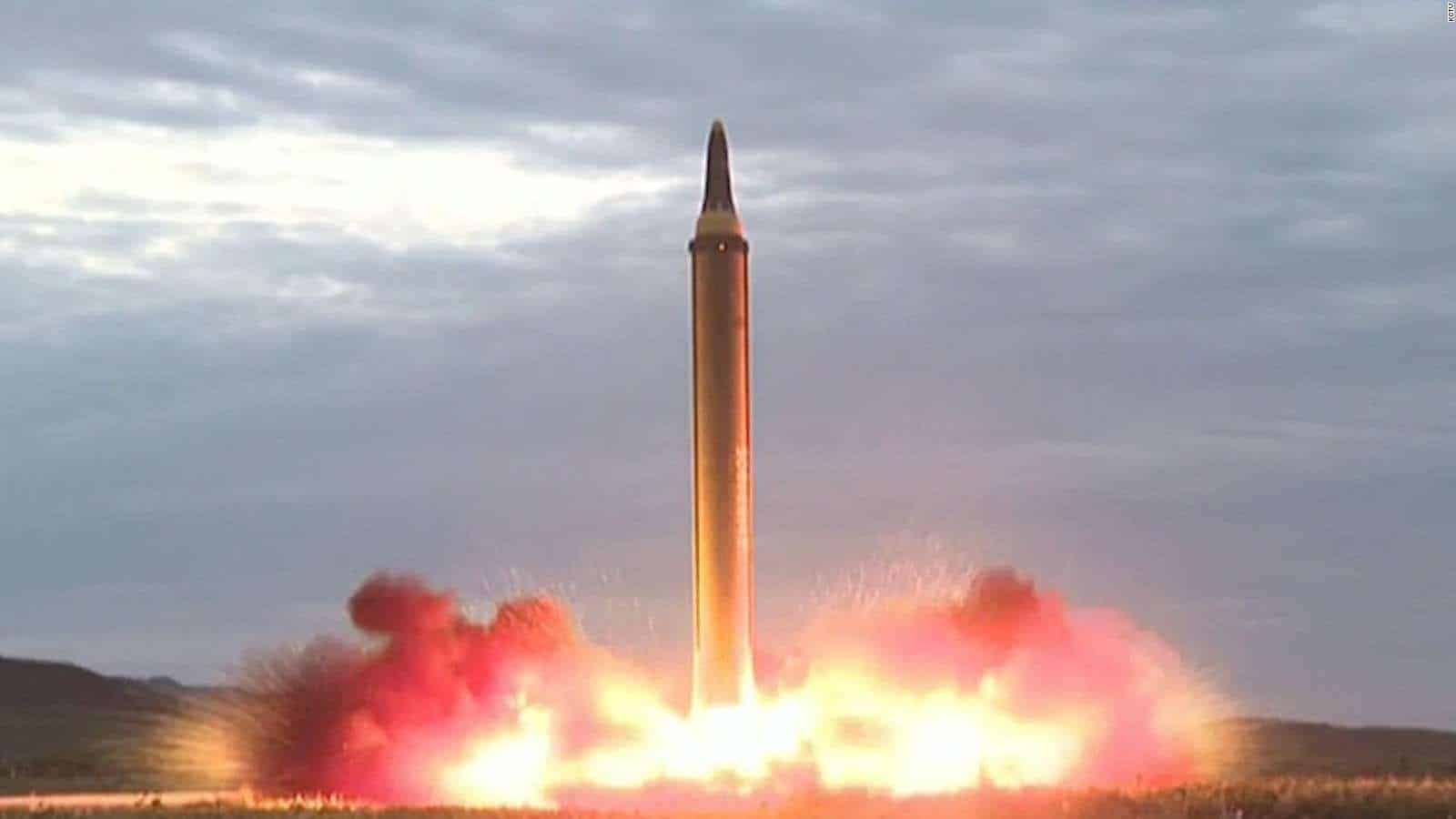North Korea unsuccessfully fired an intercontinental ballistic missile during a new salvo of launches Thursday, the South Korean military said, with Washington urging all nations to enforce sanctions on Pyongyang.
The launches prompted South Korea and the United States to extend their ongoing joint air drills, the largest-ever such exercises, citing North Korea’s “provocations”.
People in parts of northern Japan were ordered to seek shelter during the North’s latest launches, which included two short-range missiles and followed a blitz of projectiles fired Wednesday.
The largest of Thursday’s launches, however, “is presumed to have ended in failure”, the South Korean military said.
The United States condemned the ICBM launch despite its apparent failure.
“This action underscores the need for all countries to fully implement DPRK-related UN Security Council resolutions,” US State Department spokesman Ned Price said, using the North’s official name of the Democratic People’s Republic of Korea.
Washington also confirmed information provided by the South Korean military, which said earlier it had detected the launch of the long-range ballistic missile at around 7:40 am (2240 GMT Wednesday) in the Sunan area of Pyongyang.
Seoul’s Joint Chiefs of Staff said the ICBM appeared to have failed during “second-stage separation”.
“The range of the long-range ballistic missile is around 760 kilometres, altitude of 1,920 kilometres at speed of Mach 15,” the military said.
It also detected what were “believed to be two short-range ballistic missiles fired at around 08:39 am from Kaechon, South Pyongan province.”
South Korea’s military “is maintaining a full readiness posture while closely cooperating with the US and strengthening surveillance and vigilance,” it said.
‘The most horrible price’
Pyongyang fired more than 20 missiles on Wednesday, including one that landed near South Korea’s territorial waters.
One short-range ballistic missile crossed the Northern Limit Line, the de facto maritime border, on Wednesday, prompting President Yoon Suk-yeol to call it “effectively a territorial invasion”.
The launches come as Seoul and Washington stage their largest-ever joint air drills, involving hundreds of warplanes from both sides.
Pyongyang has called the exercise, dubbed Vigilant Storm, “an aggressive and provocative military drill targeting the DPRK”, and warned that, if it continues, Seoul and Washington will “pay the most horrible price in history.”
The exercise had been due to end Friday, but South Korea’s air force said Thursday that it would extend its air drills with the United States in response to the latest launches.
“The joint air forces have agreed to extend the Vigilant Storm drill that kicked off on October 31 with respect to the North’s recent provocations,” the air force said in a statement.
Tokyo confirmed Thursday’s launches, with the Japanese government issuing a special warning to residents of northern regions to stay indoors or seek shelter.
Tokyo initially said the missile had flown over Japan, prompting a “J-Alert” to be issued, but defence minister Yasukazu Hamada later said that “the missile did not cross the Japanese archipelago, but disappeared over the Sea of Japan.”
‘Tactical nuclear drills’
Washington and Seoul have repeatedly warned that Kim Jong Un’s recent missile launches could culminate in another nuclear test — which would be Pyongyang’s seventh.
“Quite possible tactical nuclear weapons test(s) will be next. Possibly very soon,” Chad O’Carroll of Seoul-based specialist site NK News said on Twitter.
Ahn Chan-il, a North Korean studies scholar, agreed.
“These are North Korea’s pre-celebration events ahead of their upcoming nuclear test,” he told AFP.
“They also seem like a series of practical tests for their tactical nuclear deployment.”
North Korea revised its laws in September to allow for pre-emptive nuclear strikes, with leader Kim declaring the country to be an “irreversible” nuclear power — effectively ending negotiations over its banned arms programs.
On October 4, North Korea fired a missile over Japan that also prompted evacuation warnings. Pyongyang later claimed it was a new type of “ground-to-ground intermediate-range ballistic missile”.
It was the first time North Korea had fired a missile over Japan since 2017.
Pyongyang later claimed that the launch and a blizzard of other tests around the same time were “tactical nuclear drills” that simulated showering South Korea with nuclear-tipped missiles.











